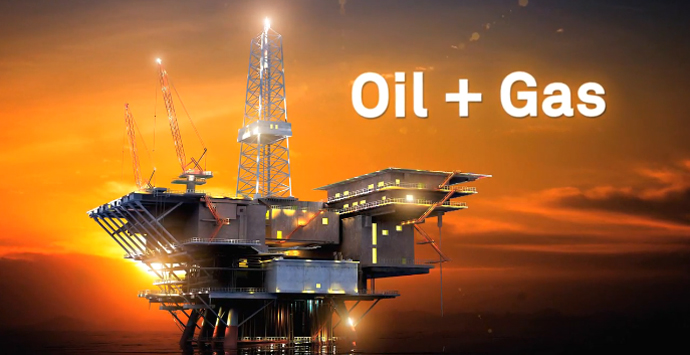The rising #cost of #extraction and #explosive growth of unstructured #data are just a few #challenges the #oil and #gas #industry is facing today. With these pressing issues, #companies are relying on #BigData solutions to handle difficulties related to exploration, and the return is seemingly endless. Companies that implement #bigdata #analytics, sensor systems and other #technologies will be well positioned to meet these industry challenges. Simply put, oil producers recognise the value of data collection and analysis gained from high-performance computing (#HPC) solutions. Therefore, investment in Big Data technologies is now a pre-requisite for success in this industry.
Today, oil and gas companies are collecting huge volumes of data sets at great speed during the production lifecycle – exploration, drilling and production. This includes seismic data, operations logs, reservoir simulation data and production data. Most of this data is difficult to store, integrate and ingest due to its highly unstructured and semi-structured nature. So the vision is to have the capability to enable high velocity data capture, real-time analysis, continuous advancement in simulation and visualisation techniques, to improve processes, make more-informed business decisions, and manage safety, maintenance and costs.
This is an industry where advanced analytics can help decode complex processes, simulations can tweak minor areas of operations that have a big impact on cost efficiency and safety, and sensors can detect massive oil reserves quietly hidden for over a million years.
A New Decade of Sensing
With the impressive advances in remote sensor monitoring and visualization, data that once took decades to understand is now providing insights in a matter of days, guiding exploration processes. Seismic data is not the same as it used to be. With better equipment, sensors are reaching inaccessible areas to capture data in real time. We have not only seen radical advancements in seismic equipment and imaging capabilities, but data points from well logs and production fields are increasing many folds. And this collected data never gets outdated or obsolete, and is obtainable at a later date for analysis. But it requires a storage system that demonstrates reliability for long-term storage of data, ready to be consumed immediately for analysis and visualisation.
Time is money. And no other industry understands this better than Energy. Making several machine components talk to each other over vast distances without human intervention is a dream we have already achieved. And now sensor technology and big data capabilities are growing in parallel to achieve a bigger vision and more. To stay sustainable, oil companies need to seek out a service provider for state-of-art connectivity and reliable computing solutions to manage the quagmire of unstructured data.
Therefore, in recent years, Sensor-Cloud infrastructure is becoming popular as an open, flexible platform for multiple controlling applications. It enables Cloud-Based Sensor Data Processing, so that information can be stored and widely shared to assess current operations.
Big Data Analytics in Oil & Gas Lifecycle – The Big Picture
The success of Oil & Gas companies not only depends on identifying large reserves, but also on their capabilities to recover, produce and supply in the most economically sustainable way. Today, the entire production life cycle of Oil & Gas is a highly data intensive process. Each of the processes – Identifying reserves, exploration, production, supply leans on the analytical solutions provided by Big Data Analytics.
Exploration & Drilling
Experts have been predicting how soon the oil and gas buried under would run out eventually. Dwindling reserves mean the complexity of exploring available reserves will shoot up, and we will be driven to look deeper, in harsher and remote locations. And exploring new reserves is a hit and miss effort. However, new techniques are being developed to use the data that is being collected from drilling these sites to help pinpoint other locations where reserves could be hiding.
Identifying traces Pattern recognition is applied to the data collected during seismic acquisition to identify seismic traces
Forecasting Big Data techniques can integrate and analyse data to boost throughput from existing well through forecasting methods. It also optimizes oil exploration by analysing seismic drilling and production data.
Predict Drilling Success Use real-time big drilling data to identify anomalies or predict drilling success
Production Forecasting
Production forecasting is the first step to determine the likely output of the reservoir and evaluate the resources to be spent on collecting it. When this decision is data-led, operators can have more confidence in the results.
Equipment Maintenance
Sensor data from equipment and oil field environment when analysed, can successfully predict equipment failures enabling real-time capture, storage and analysis of high resolution sensor data to better predict potential equipment failure.
Predictive maintenance A machine is constantly providing status updates on performance. Big data analytics look for patterns in performance, and when an anomaly is identified, a decision about the best corrective action is automatically taken or a person is alerted so that a decision can be made on the best course of action. Incorporating Big data analytics into forecasting processes can detect breakdowns and failures in time to avoid catastrophes. Specially when machinery used in drilling has to operate in harsh conditions for prolonged periods of time so is prone to wear and damage. To resist this scenarios, sensors which collect data on its performance and if required, repair and replacements can be done in an effective manner.
RIGHT IT INFRASTRUCTURE REDUCES TIME TO OIL
When huge data sets need to be analysed simultaneously, High Performance Storage infrastructure is imperative to support the latest seismic processing initiatives. Tyrone’s Data Centre capabilities delivers the combined capacity, performance and scalability to meet the requirements of today’s challenging seismic processing workflows. By using fast, scalable systems with parallel access to data, engineers can now perform analysis against much larger data sets delivering more effective models, and enable faster time to oil.
Oil and gas Data Centres have massively high performance computing environments, so a lot of data is continuously ingested and analysed with heavy HPC workloads. A successful HPC architecture must have a robust storage platform to meet high capacity demands with high throughputs.
High performance clusters, HPC cloud tuned for accelerating reservoir simulations
End-to-end storage architecture that address all aspects of data-intensive workflows – from high-performance storage to deep tape archive
Capacity to optimizes seismic processing/imaging workflows.
Parallel file systems, storage networking, storage systems and archiving designed for very large data sets
Dense storage systems that provide the proper balance between capacity and throughputs.
A pre-tested and proven parallel file systems to power up the large oil and gas data centres
Tyrone HPC on demand is a solution that can be readily customised to serve the HPC needs of the Oil and Gas industry. Equipped with all necessary features, our solutions are tailored to deliver the requisite performance needed by organisations in the Oil and Gas industry.
Tyrone as a leading provider of servers, storage and HPC Solutions, has been serving the varied needs of customers across industry domains for more than a decade.
Tyrone aims to change the way you work by providing you with the right technology blocks to achieve your business goals. And in so doing, we redefine multiple paradigms.












